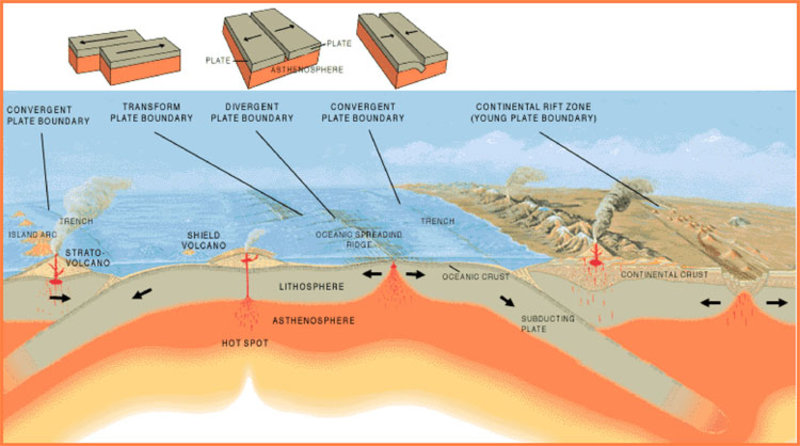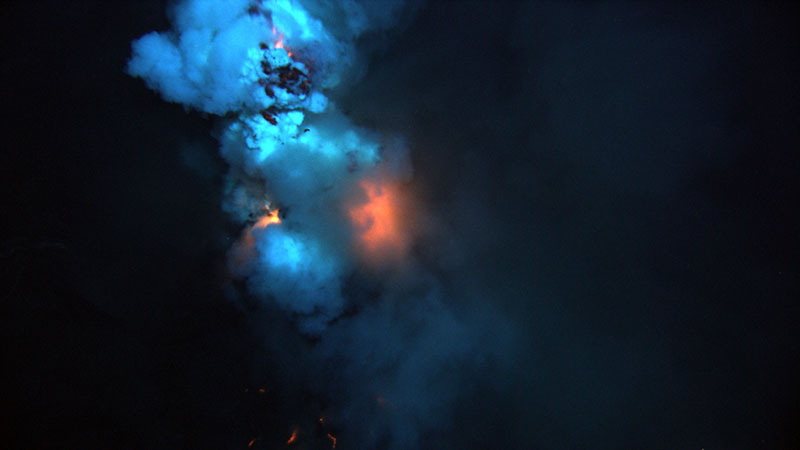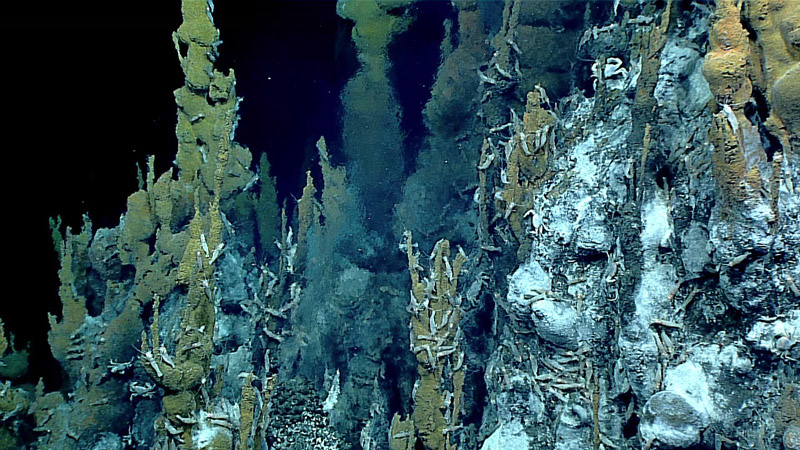What are the different types of plate tectonic boundaries?
There are three kinds of plate tectonic boundaries: divergent, convergent, and transform plate boundaries.

This image shows the three main types of plate boundaries: divergent, convergent, and transform. Image courtesy of the U.S. Geological Survey. Download image (jpg, 76 KB).
The Earth’s lithosphere, which includes the crust and upper mantle, is made up of a series of pieces, or tectonic plates, that move slowly over time.
A divergent boundary occurs when two tectonic plates move away from each other. Along these boundaries, earthquakes are common and magma (molten rock) rises from the Earth’s mantle to the surface, solidifying to create new oceanic crust. The Mid-Atlantic Ridge is an example of divergent plate boundaries.
When two plates come together, it is known as a convergent boundary. The impact of the colliding plates can cause the edges of one or both plates to buckle up into mountain ranges or one of the plates may bend down into a deep seafloor trench. At convergent plate boundaries where an oceanic plate meets a continental plate, oceanic crust is forced down into the Earth’s mantle and begins to melt. The melted rock rises into and through the overlying plate as magma, often forming a chain of volcanoes parallel to the plate boundary. Powerful earthquakes are common along these boundaries. The Pacific Ring of Fire is an example of a convergent plate boundary.
Two plates sliding past each other forms a transform plate boundary. One of the most famous transform plate boundaries occurs at the San Andreas fault zone, which extends underwater. Natural or human-made structures that cross a transform boundary are offset — split into pieces and carried in opposite directions. Rocks that line the boundary are pulverized as the plates grind along, creating a linear fault valley or undersea canyon. Earthquakes are common along these faults. In contrast to convergent and divergent boundaries, crust is cracked and broken at transform margins, but is not created or destroyed.


